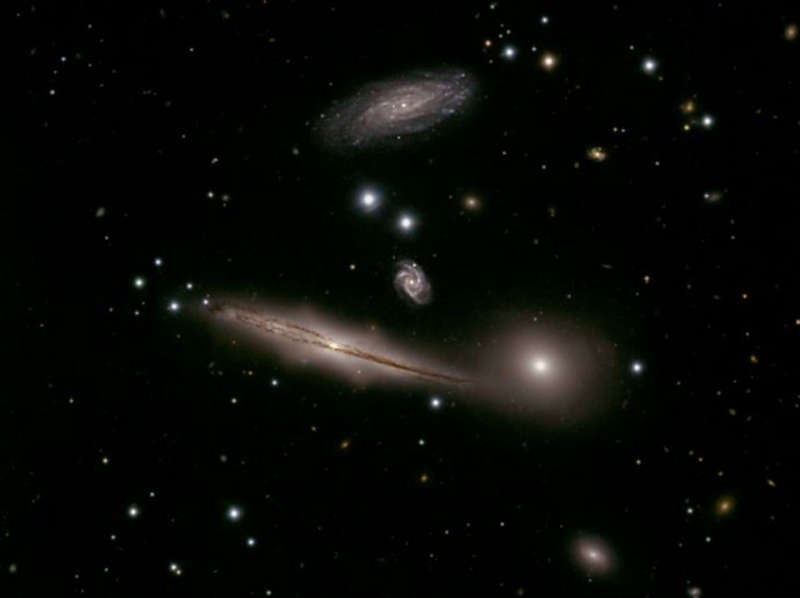
|
Credit & Copyright: GMOS-S Commissioning Team,
Gemini Observatory
Explanation:
Sometimes galaxies form groups.
For example, our own
Milky Way Galaxy is part of the
Local Group of Galaxies.
Small, compact groups, like Hickson Compact Group 87
(HCG 87)
shown above,
are interesting partly because they slowly self-destruct.
Indeed, the galaxies of
HCG
87 are gravitationally stretching each other during their 100-million year
orbits around a common center.
The pulling creates colliding gas that causes bright bursts of
star formation and feeds matter into their
active galaxy centers.
HCG 87
is composed of a large
edge-on
spiral galaxy visible near the image center, an
elliptical galaxy
visible to its right, and a
spiral galaxy visible near the top.
The small spiral near the center might be far in the distance.
Several stars from
our Galaxy are also visible in the foreground.
Studying groups like HCG 87 allows insight into how all
galaxies form and evolve.
Follow APOD on:
Facebook,
Google Plus,
or
Twitter
|
January February March April May June July August September October November December |
| |||||||||||||||||||||||||||||||||||||||||||||||||||||||
NASA Web Site Statements, Warnings, and Disclaimers
NASA Official: Jay Norris. Specific rights apply.
A service of: LHEA at NASA / GSFC
& Michigan Tech. U.
Based on Astronomy Picture
Of the Day
Publications with keywords: galaxies - HCG 87
Publications with words: galaxies - HCG 87
See also:
- APOD: 2025 August 28 Á Galaxies, Stars, and Dust
- APOD: 2025 March 2 Á The Hubble Ultra Deep Field in Light and Sound
- APOD: 2024 December 31 Á The Twisted Disk of NGC 4753
- APOD: 2024 December 18 Á NGC 660: Polar Ring Galaxy
- Stellar Streams in the Local Universe
- APOD: 2024 April 15 Á The Cigar Galaxy from Hubble and Webb
- APOD: 2024 March 20 Á The Eyes in Markarians Galaxy Chain
